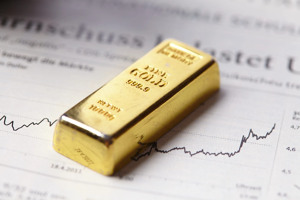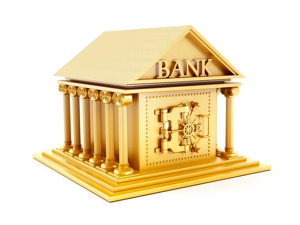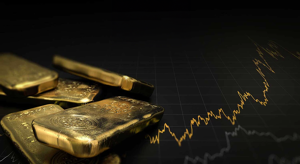Tavex uses cookies to ensure website functionality and improve your user experience. Collecting data from cookies helps us provide the best experience for you, keeps your account secure and allows us to personalise advert content. You can find out more in our cookie policy.
Please select what cookies you allow us to use
Cookies are small files of letters and digits downloaded and saved on your computer or another device (for instance, a mobile phone, a tablet) and saved in your browser while you visit a website. They can be used to track the pages you visit on the website, save the information you enter or remember your preferences such as language settings as long as you’re browsing the website.
| Cookie name | Cookie description | Cookie duration |
|---|---|---|
| tavex_cookie_consent | Stores cookie consent options selected | 60 weeks |
| tavex_customer | Tavex customer ID | 30 days |
| wp-wpml_current_language | Stores selected language | 1 day |
| AWSALB | AWS ALB sticky session cookie | 6 days |
| AWSALBCORS | AWS ALB sticky session cookie | 6 days |
| NO_CACHE | Used to disable page caching | 1 day |
| PHPSESSID | Identifier for PHP session | Session |
| latest_news | Helps to keep notifications relevant by storing the latest news shown | 29 days |
| latest_news_flash | Helps to keep notifications relevant by storing the latest news shown | 29 days |
| tavex_recently_viewed_products | List of recently viewed products | 1 day |
| tavex_compare_amount | Number of items in product comparison view | 1 day |
| Cookie name | Cookie description | Cookie duration |
|---|---|---|
| chart-widget-tab-*-*-* | Remembers last chart options (i.e currency, time period, etc) | 29 days |
| archive_layout | Stores selected product layout on category pages | 1 day |
| Cookie name | Cookie description | Cookie duration |
|---|---|---|
| cartstack.com-* | Used for tracking abandoned shopping carts | 1 year |
| _omappvp | Used by OptinMonster for determining new vs. returning visitors. Expires in 11 years | 11 years |
| _omappvs | Used by OptinMonster for determining when a new visitor becomes a returning visitor | Session |
| om* | Used by OptinMonster to track interactions with campaigns | Persistent |
| Cookie name | Cookie description | Cookie duration |
|---|---|---|
| _ga | Used to distinguish users | 2 years |
| _gid | Used to distinguish users | 24 hours |
| _ga_* | Used to persist session state | 2 years |
| _gac_* | Contains campaign related information | 90 days |
| _gat_gtag_* | Used to throttle request rate | 1 minute |
| _fbc | Facebook advertisement cookie | 2 years |
| _fbp | Facebook cookie for distinguishing unique users | 2 years |
What Affects The Price of Gold? A Comprehensive Guide

How the gold price reacts to changes in interest rates, inflation, industrial innovations, stock indices, central bank decisions and crises.
Two of the key points that make gold so desirable are that it is both a scarce commodity and a store of value. Therefore, its price development depends on many more factors than, for example, the price development of a stock. This is also why the price of gold is subject to frequent fluctuations – although the price has mainly risen in recent years.
The main factors affecting the gold price can be divided into long-term, medium-term and short-term factors. The longer-term factors affecting the price of gold include economic growth in individual countries as well as at the global level. In contrast, geopolitical crises or massive strategic gold purchases or sales by large investors in futures markets can only affect the development of the gold price in the short term.

Demand for gold rises with prosperity
- The development of national prosperity and economic growth in a country or region are important for the long-term development of the gold price. As phases of economic boom have a very favourable effect on the demand for gold.
- Whether in the form of coins, bars or securities backed by physical gold: only above a certain income level do people demand gold in larger quantities.
- The same applies to the demand for precious gold jewellery: only those who can afford it buy these luxury goods.
- This can be clearly observed, for example, in the development of private demand for gold in China, which has grown explosively in recent years.
Central banks rely on gold as a currency reserve
- According to the World Gold Council, central banks around the world have continuously expanded their gold reserves in recent years, thus tending to support the price of gold.
- Around 34,789 tons of gold are now held in central banks vaults, of which 10,776 tons are held by central banks in the euro area alone (including the ECB), where gold accounts for 59% of total foreign exchange reserves.
- If the central banks’ long-term strategy were to change, the resulting gold sales could flood the market, putting pressure on the price of the precious metal.

Industrial applications influence gold price developments
- About half of the gold demanded in the world goes directly to the jewellery industry, but there are many other industrial uses for gold.
- For example, according to a study by Chalmers University of Technology in Gothenburg, Sweden, around 440 tons of gold are used on European roads as a component in cars.
- In the chemical industry, gold is indispensable as a catalyst, and the precious metal is also becoming increasingly important in medicine: gold is a key component in rapid tests for the detection of many diseases such as malaria and is currently also used in most COVID-19 tests. Gold is also successfully used therapeutically in the treatment of joint diseases such as rheumatism.
- Thanks to its extreme ductility and conductivity, the precious metal is also an indispensable component in many mobile applications such as smartphones and smart wearables. Here in particular, strong growth rates are expected in the future, which should support the gold price.
The price of gold in the long-term isn’t solely driven by demand
- Gold is a rare commodity that is difficult to extract and therefore a valuable commodity.
- No new significant gold deposits have been discovered in the world since 2012 and, according to the financial information service SNL, today’s known mining opportunities may be exhausted in 12 years – provided that the persistently high global demand for gold continues. For ten years it has been over 4,000 tons per year.
- According to a study by precious metals consultancy Metals Focus, the price of extracting a troy ounce of gold from an existing gold mine is USD 1,150.
- It gets much more expensive when a mining company has to develop previously unexploited gold deposits and build new production facilities. This can take up to 15 years: then the so-called incentive price is $1,500 per troy ounce. If the gold price falls below this threshold, it is simply no longer profitable for mining companies to develop new gold deposits.
- For this reason, how much gold is actually produced in the mines is very important for the price development of the precious metal.
- The production volumes are shown in the annual balance sheets of the major gold producers, which publish the corresponding data on their websites in the Investor Relations section. There you will also find information on gold recycling, which is becoming increasingly important and also more profitable for gold producers.
- According to the trade journal “EU-Recycling und -Umwelttechnik”, 30% of the global demand for gold is already covered by recycled gold.
High inflation could boost gold price in the medium term
- History has shown it often enough: in times of high inflation, such as the 1970s in the United States, the price of gold has often risen sharply.
- In the 2018 annual survey of central banks on their reasons for increasing their gold reserves, 55% also cited the precious metal’s function as an inflation hedge.
- However, the gold price may only benefit slightly when inflation rates are less high – for example, when inflation-indexed government bonds can serve as an interest-bearing alternative.
Interest rates have a strong influence on the price of gold
- Gold has always been considered the hardest currency in the world; the precious metal is not subject to any aging processes and, unlike many securities, it is not exposed to any default risk.
- But gold also shares another characteristic with currencies: it does not provide a return in the form of interest or dividends. The increase in value occurs exclusively through an increase in the price of gold.
- This puts gold at a disadvantage not only compared to stocks, bonds and other securities, but also compared to money market products – from demand deposit accounts to savings plans.
- For this reason, the gold price is sensitive to movements in interest rates, which are usually triggered by medium-term changes in policy rates by the central banks of individual countries or – in the euro area – by the ECB.
- If real interest rates – i.e. interest rates adjusted for inflation – rise, this can have a negative effect on the price of gold, as other investment opportunities now become more attractive.
- Conversely, the price benefits from low real interest rates, which are common in many countries today: both the United States and the euro area have been pursuing strict low or zero interest rate policies for several years.

- However, the gold price does not always react in the same way to changes in interest rates: the direction matters, as the World Gold Council discovered in a US study.
- In times of negative real interest rates in the US, the price per ounce tended to perform twice as well as the long-term average, but the performance of the gold price remained positive even with positive real interest rates up to a level of 2.5%. Only when real interest rates rose above this level did the gold price weaken.
US dollar: the most important currency for gold price developments
- Like most commodities, gold is traded on the world market mainly against the US dollar in terms of volume. Moreover, both the US dollar and gold are sought-after currency reserves for central banks around the world.
- It is no coincidence that the US Federal Reserve has by far the largest gold reserves. In the days of the gold standard, the price of gold and the US currency were even linked.
- Today, the US dollar and the gold price give each other short-term impulses: a strong dollar tends to weaken the gold price and a strong gold price tends to weaken the US currency, while a weak dollar can cause the gold price to rise.

- However, this is not equally true in both directions, as shown by a 2018 analysis by the World Gold Council based on the evaluation of monthly gold data from January 1971 to March 2018: in times of a weak dollar, the gold price tends to rise twice as much as it falls when the dollar rises.
- This asymmetric relationship can also be observed in the evolution of the gold price against other currencies: during the European financial crisis, the gold price behaved quite similarly against the euro. Many professional investors therefore use this circumstance to hedge against possible weaknesses in the US dollar, the euro and other currencies with gold.
Stock market developments may affect the price of gold
- Stock indices such as the DAX® or EURO STOXX 50® reflect the economic development of a country or region: during economic upturns an index rises, during economic crises it falls. Such developments are usually medium-term and can drive the price of gold – but they don’t have to.
- While shares of booming companies tend to offer attractive alternatives to gold investments, a boom also means growing prosperity, which, as we know, can be reflected in higher demand for gold.
- In addition, concerns about future crises, which are not yet reflected in the performance of a stock index, can lead to more gold investment despite a boom.
- As an example, consider the euro area and the United States from late 2018 to early 2020, where gold also rallied despite high levels in stock indices.
Geopolitical uncertainty drives up gold prices
- In our globalised society, there are hardly any more regionally limited crises that do not affect the rest of the world outside the directly affected region. Just think of the smoldering trade conflict between the US and China or Brexit: both crises have had a lasting effect on the price of gold.
- Similarly, regionally limited wars or threats of war can cause investors worldwide to turn to gold as a proven ‘safe haven’, as the precious metal is not called for nothing.
- For example, the price of gold hit a record high when the Soviet Union invaded Afghanistan in 1980.
Movements among major gold investors have significant influence
- Using swarm intelligence or looking over the shoulder of professional investors – both can be beneficial in assessing the possible evolution of the gold price. Stock data for so-called gold ETCs offer an opportunity to do this.
- An ETC – short for Exchange Traded Commodity – is an exchange-traded commodity fund that investors can buy shares in, just like other investment funds.
- Since these shares are usually certificates or bonds that would not protect investors from total loss in the event of the fund issuer’s insolvency.
- Many of these funds are physically backed by gold bullion, i.e. for each share of a gold ETC sold, an equivalent amount of real gold is deposited.
- Large amounts of gold are accumulated here. For example, the portfolio of Xetra-Gold, Europe’s most traded gold ETC with physical hedging, alone comprises more than 200 tons of gold bullion.

- Based on the changes in gold ETC stock data, published daily by news agencies such as Reuters or Bloomberg, it is easy to see what the current demand situation for gold looks like – and whether the gold price tends to rise or fall.
The multiplicity of factors makes forecasting difficult.
If the gold price could be observed under laboratory conditions in interaction with one of the listed influencing factors, a reasonably reliable forecast of the future development of the gold price would be possible.
Unfortunately, the reality is different. Here, long-term and medium-term factors interact, whose effect is then suddenly weakened or even offset by short-term influences. Sometimes the price of the precious metal is driven by events that have nothing to do with the gold market. This is what happened recently when the coronavirus pandemic turned into a worldwide crisis situation. As expected, there were significant falls in stock markets, while gold, as a safe haven, increased significantly in value.
But suddenly, the price of gold fell – even though, by all accounts, the simultaneous cut in the US federal funds rate should have provided an additional stimulus to the demand for gold. What had happened? Had commodity experts and analysts around the world been wrong all these years? No, the reason for the falling gold price lay elsewhere: many large investors had to liquidate their extensive gold purchases in the futures market in order to have enough cash to meet their payment obligations following losses in the stock market.
The individual factors affecting the price of gold should always be considered. This should be evaluated in the context of developments in other markets to get an idea of the direction in which the precious metal may develop in the near future. However, as with any investment opportunity, there is no such thing as a reliable forecast.

















